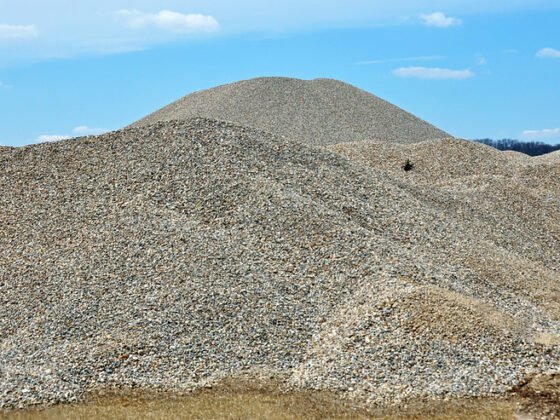Table of Contents Show
Pruning fruit trees can improve your harvest. Frequent tree trims can prevent deadly diseases or damage to your home from a fallen tree. If you’d like to understand how to trim a tree, keep reading.

In this guide, you’ll learn some tips on pruning trees. Some homeowners don’t have time to address this critical task.
You might consider working with a trimming tree company that will handle this job for you. If you’d like to learn more, browse the tips below.
Work With Arborists
People who don’t trim their trees should look at hiring an arborist. An arborist will know when to trim the trees. They also will provide some maintenance tips on how to protect them.
Make sure you find a reputable arborist company in your area. Talk to previous clients and ask them about their experience.
Keep Your Home and Family Safe
Your arborist will come once or twice a year to trim the trees in your yard. Keeping up with tree maintenance will protect your investment and landscape.
People who don’t keep up with tree trimming will often deal with landscape problems. A sick tree could end up falling and crashing on your home or someone.
Read Also:
When Should You Prune Trees?
Homeowners should look out for specific symptoms in their trees. For regular tree pruning, you’ll want to prune mature trees at least every three years. A younger tree will need to get trimmed often, so look at it every two years.
Consider the kind of tree you will prune. Evergreens and fir trees can grow for years without needing to get touched. Fruit trees will need to get pruned yearly if you hope to have a harvest every season.
You might want to prune the trees during the dormant season. The dormant season is the optimal time for any tree pruning. In the middle of winter, you could hire tree pruning services.
Try Pruning Small Branches
If you prune small branches, you will help encourage new growth on the tree. Cut a branch a quarter above a bud that faces from the tree.
This will be the direction the new tree limb grows. Keep the cuts at a 45-degree angle. An angled slice can help prevent disease or water damage from harming the tree.
Cut Thick Branches Three Times
When pruning thick tree branches, you will need to make three cuts. The first two cuts should sever the limb, and the third will create a flat surface for the stump.
Hire proper tree-cutting professionals if you don’t want to cut these branches. Some homeowners will put on a protective coating after cutting the branch. This coating will help the tree develop a callous and prevent infection.
You’ll want to measure 18 inches from the bottom of the branch. Make an incision on the underside of the branch as your first cut. Wrap the top side of the same branch, and measure an inch out. There’s your second cut.
Saw through these branches until you connect the first two cuts. The branch should break and fall. After removing the branch, look for the branch collar. You’ll see rough bark and slight swelling. The final cut will go outside of this collar. Make a 45-degree angle cut far from the bottom of the tree. You don’t want to leave a stub.
Pruning a Tree Too Much
Homeowners sometimes make the mistake of over-pruning their trees. This will end up removing the leaves available for the tree to make food.
Pruning too much will weaken the tree, and pests or diseases will often overtake it. Also, over-pruning will put the tree at risk of wind damage.
Setting Up a Trimming Schedule
Weather, tree species and location can affect how often you need to trim trees. Usually, pruning a tree at least every five years will work. Take note of all these different factors when setting up your tree trimming schedule.
You could hire a local arborist who will set you up with an excellent tree care plan. Your trees will get the help they need, and you won’t need to worry about tree trimming.
Trimming Evergreen Trees
Evergreen trees don’t benefit from getting pruned often. You might not have to trim or prune these trees at all. Evergreens usually get rid of dead or damaged tree branches on their own accord.
Trimming Oak Trees
Oak trees are a particular species. They perform well when they have a regular trimming schedule. When young, you should trim these oak trees every few years. As the oak tree ages, you can trim it every three or five years.
Oak wilt is a common disease that’s deadly to these trees. That’s why it’s essential to prune the oak tree during specific intervals. You should look at pruning the tree from October to March. Don’t trim an oak tree in the summer.
What About Trimming Fruit Trees?
Fruit trees will need more specific care and attention. Look at pruning them once a year. When you trim the trees, don’t try to hire an experienced arborist who will help you with these landscaping tasks.
Steps to Take Before Pruning
Before pruning your trees, ensure your tools are in good shape. You want clean and sharp shears that will make a clean cut.
After you prune a tree, you will need to disinfect the tool. Disinfect it in a solution of nine parts water and one part bleach. Rinse it with soap and water and then dry it. Tree diseases can spread if you don’t clean your tools.
Dealing With Forked Trunks
A forked trunk will not provide the same stability as a single-trunk tree. The forked trunks will grow together, leaving a space where insects can harm the tree.
The tree can split, or one of the trunks will end up breaking off the tree. Remove a forked trunk when the tree’s young.
You should try to cut low to the ground and make it an angled cut. This way, the rainwater will drain off the stump. Don’t damage the bark on the remaining trunk.
What About Clustered Branches?
Get rid of excessive branches. Lots of branches bunched together will weaken a tree. Weak and small branches can affect the development of larger branches.
Trees need to form many branches at a single point on the trunk. These excessive branches can block light and air circulation from the other branches. Removing these extra branches will help.
Removing Stubs
A stub will remain if a branch breaks or gets cut too far. Get rid of these stubs right away. A stub can prevent a protective callus from closing the wound. Insects can get inside and damage the tree.
When you cut the old stub, ensure not to cut the swollen callus tissue near the tree trunk. It needs to seal the wound.
Handle Some Tree Wounds
You won’t need to put a seal over the broken branches or pruned cuts. Let the tree wound breathe, so it heals fast.
A dressing can prevent the growth of callus tissue. It could trap moisture and cause rot. Arborists will use a tar-like wound dressing for particular circumstances.
Some insecticidal wound dressings can discourage beetles from spreading oak wilt disease.
Safety Measures to Consider
You need to make personal safety a priority. You should hire an arborist to help you clip the trees. Trimming the tree will mean you need a ladder.
You should be careful if the ladder’s near a power line. If you’re unsure about cutting the tree, look at leaving it with the professional. If you decide to trim the trees, you should determine the size and length of the branches.
For example, for branches that are smaller than two inches, you can cut them. Branches between two and four inches might need some assistance. Branches larger than four inches should get cut by an arborist. If you’re unsure about cutting the tree, call a certified arborist like Tree Service. An arborist will take care of any challenging cuts.
You Need to Trim Trees
Tree trimming will help encourage a tree to grow well and prevent deadly diseases or issues. You should trim trees on a schedule to ensure your trees remain in good shape. If you have fruit trees, trim them more often.
Work with a professional arborist if you need help with tree trimming. Do you need more home maintenance tips like this guide? We have a wide variety on our blog for you to check out today.









